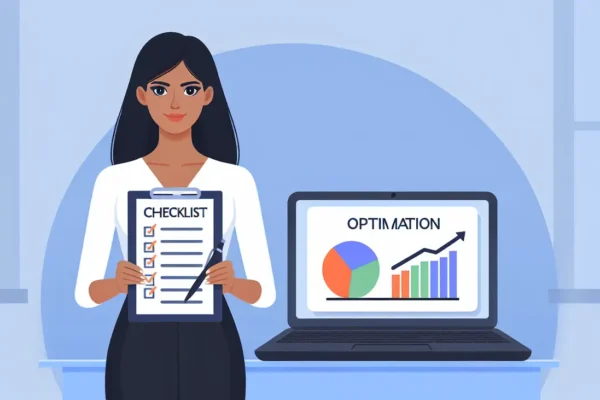Navigating the world of B2B debt recovery can be challenging, but with the right strategies in place, businesses can effectively manage and recover outstanding payments. In this guide, we will discuss techniques that will not only help you recover debts but also maintain strong business relationships.
1. Understanding the Importance of Communication
Effective communication is crucial when addressing outstanding debts. It’s important to approach debtors in a professional yet empathetic manner to maintain ongoing business relationships. In many instances, open lines of communication can avert misunderstandings and lead to faster resolutions. According to Coface, maintaining a stable dialogue with your clients helps in navigating the turbulent waters of debt recovery. By making communication a cornerstone of your debt recovery process, you can foster an environment where issues are discussed and resolved promptly.
Beyond initial contact, it’s essential to establish clear communication channels that allow for regular updates and discussions. Automation has transformed this process significantly, as highlighted by HighRadius, where automated systems assist in tracking interactions and sending timely reminders. Such systems can bridge the gap between manual processes and proactive management, ensuring that no crucial communication is overlooked or delayed.
2. Establishing Clear Credit Policies
Setting clear terms and conditions for credit can prevent misunderstandings and disputes. Clearly communicated credit policies help in setting expectations right from the start. A good policy outlines the credit terms, repayment conditions, and any related fees. As noted by experts at Spyrosoft, having these policies in place can be a deterrent to potential late payments and can assist in streamlining the debt recovery process. It’s a proactive step that demonstrates to clients your commitment to financial responsibility and clarity.
Moreover, regularly reviewing and updating your credit policies ensures they remain relevant to current market conditions and business needs. Adaptation is key, as inflexible terms can often strain client relationships. As business environments evolve, so should your credit policies, turning them into living documents that serve both your business and your clients effectively.
3. Regular Monitoring of Accounts Receivable
Keeping an eye on your accounts receivable ensures that you can promptly address overdue invoices. Regular monitoring helps identify potential issues early and allows for swift action. This vigilance is crucial as it allows businesses to foresee cash flow shortages and respond proactively. According to Coface, an efficient accounts receivable process is a backbone for a stable financial operation, helping businesses to stay ahead in their recovery efforts.
4. Implementing Automated Payment Reminders
Automated reminders are an efficient way to alert clients about upcoming or overdue payments. This strategy reduces the manual workload and helps ensure payments are made on time. Incorporating such technology streamlines operations and frees up valuable human resources. Invensis emphasizes the effectiveness of automation in enhancing the productivity of follow-up processes, reducing delays, and ultimately accelerating recovery.
5. Offering Flexible Payment Plans
By offering flexible payment options, businesses can accommodate clients who may be struggling financially. This can also increase the likelihood of full payment over time. Flexibility in payment terms is not just a goodwill gesture; it’s a strategic approach to enhancing recovery rates. As highlighted by Spyrosoft, this approach can sustain client relationships even in challenging financial climates, fostering cooperation and goodwill between creditors and debtors.
When structured appropriately, flexible plans offer clients manageable pathways to clear their debts, reducing stress and building trust. By acknowledging and responding to the variable financial situations of different clients, businesses can tailor their recovery strategies effectively. This personalization often results in more satisfactory outcomes for both parties involved.
6. Engaging Professional Collection Services
When internal efforts aren’t enough, professional collection agencies can be enlisted. These experts specialize in recovering debts efficiently while minimizing damage to business relationships. Collaborating with a specialized debt recovery agency, like those suggested by Spyrosoft, ensures that strategies are effectively tailored to specific needs. This can be particularly beneficial for businesses unfamiliar with intricate recovery processes, allowing them to focus on their core operations while enhancing financial health.
7. Negotiating Settlements
Negotiating a fair settlement can be a practical approach to recovering debts. It allows both parties to reach a mutually beneficial agreement, which may save time and resources. Settlement plans can play a pivotal role in redirecting negotiations away from disputes towards productive resolutions. By working collaboratively with clients to devise settlements, businesses often find an amicable middle ground that supports ongoing partnerships.
8. Using Legal Action as a Last Resort
Legal action should only be considered if all other methods fail. While it can be effective, it may also be time-consuming and costly, so it’s important to weigh the pros and cons. Proceeding legally requires an understanding of the entire debt recovery landscape, as legal proceedings can complicate relationships and extend timelines. It is advisable to consider legal measures as a critical recourse, following other attempts at resolution, ensuring that they do not lead to unnecessary consequences.
9. Building Stronger Relationships with Clients
Maintaining good relationships with clients can lead to better cooperation when resolving debts. Building trust and understanding can pave the way for smooth communication and negotiation. As the Coface Report highlights, robust relationships can transform debt recovery from a daunting task into a cooperative venture. Focusing on cultivating trust ensures that future financial discourses are conducted in an atmosphere of mutual respect and understanding.
10. Continuously Reviewing and Updating Strategies
Regularly assessing your debt recovery strategies allows businesses to adapt to changing circumstances. Continuous improvement ensures that your approach remains effective and relevant. By periodically reviewing your processes, you can identify areas of potential enhancement and adjust your strategies according to new insights. This agile approach is crucial for ensuring that strategies continue to yield optimal results, letting you respond adeptly to shifts in the financial landscape.







